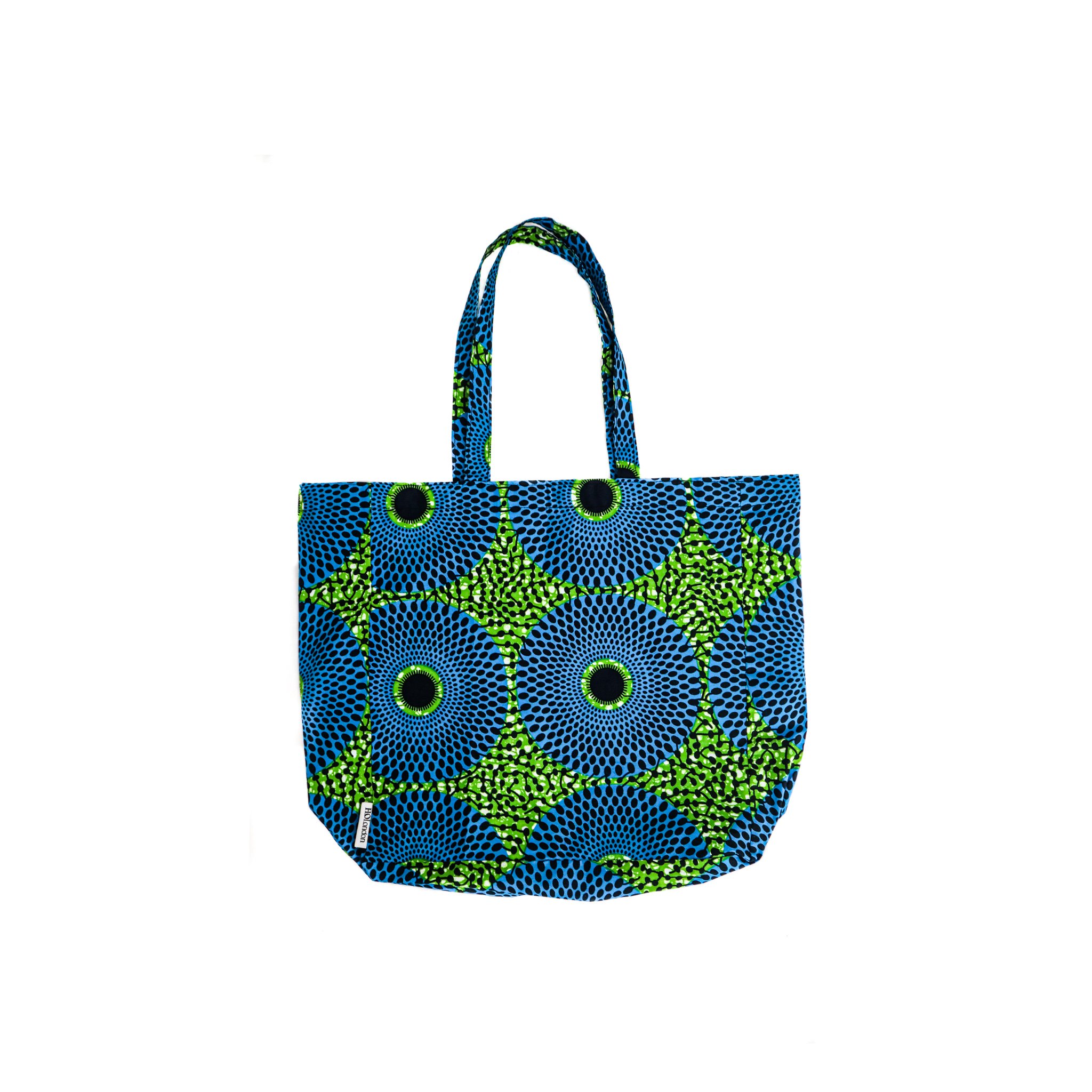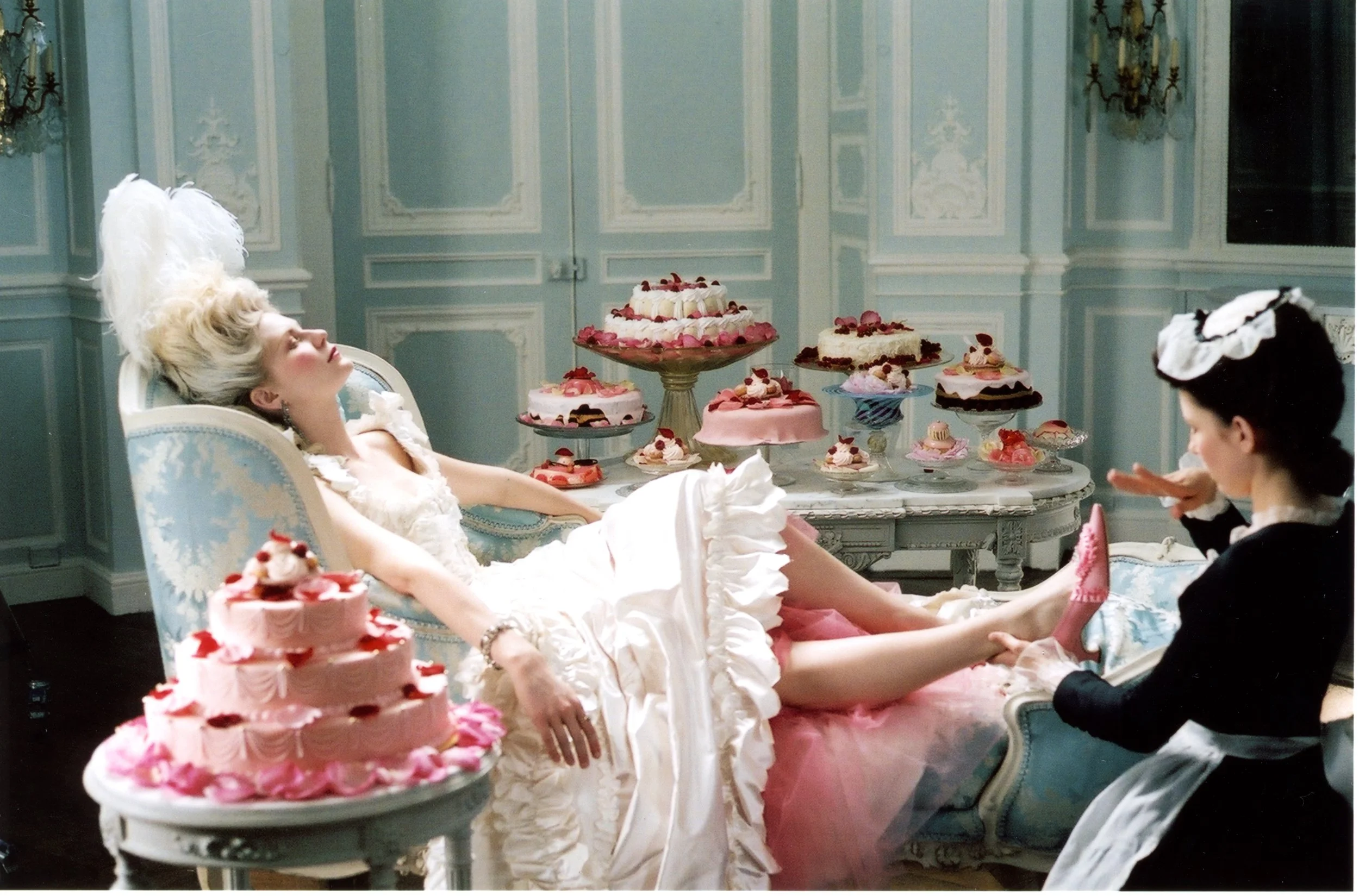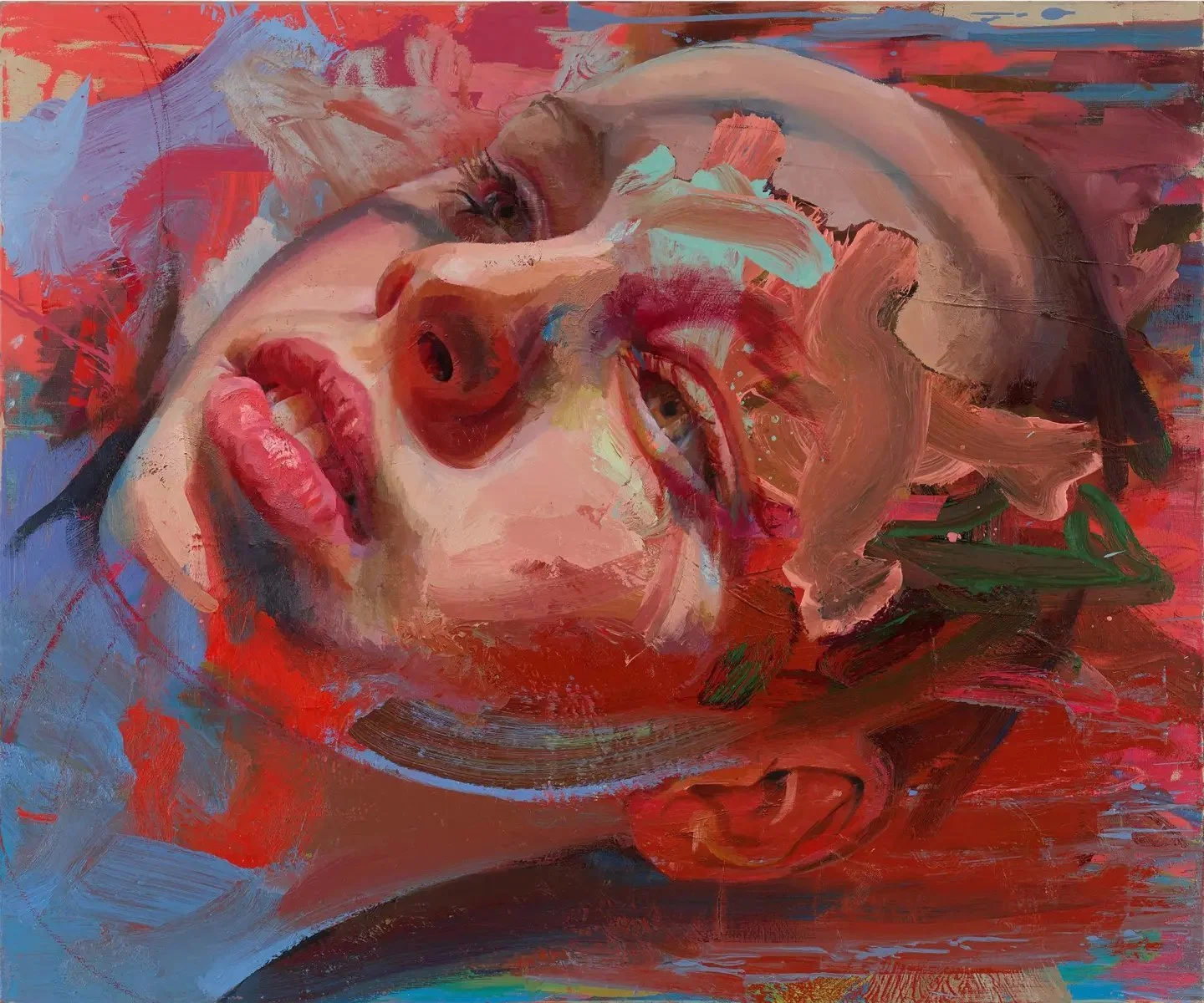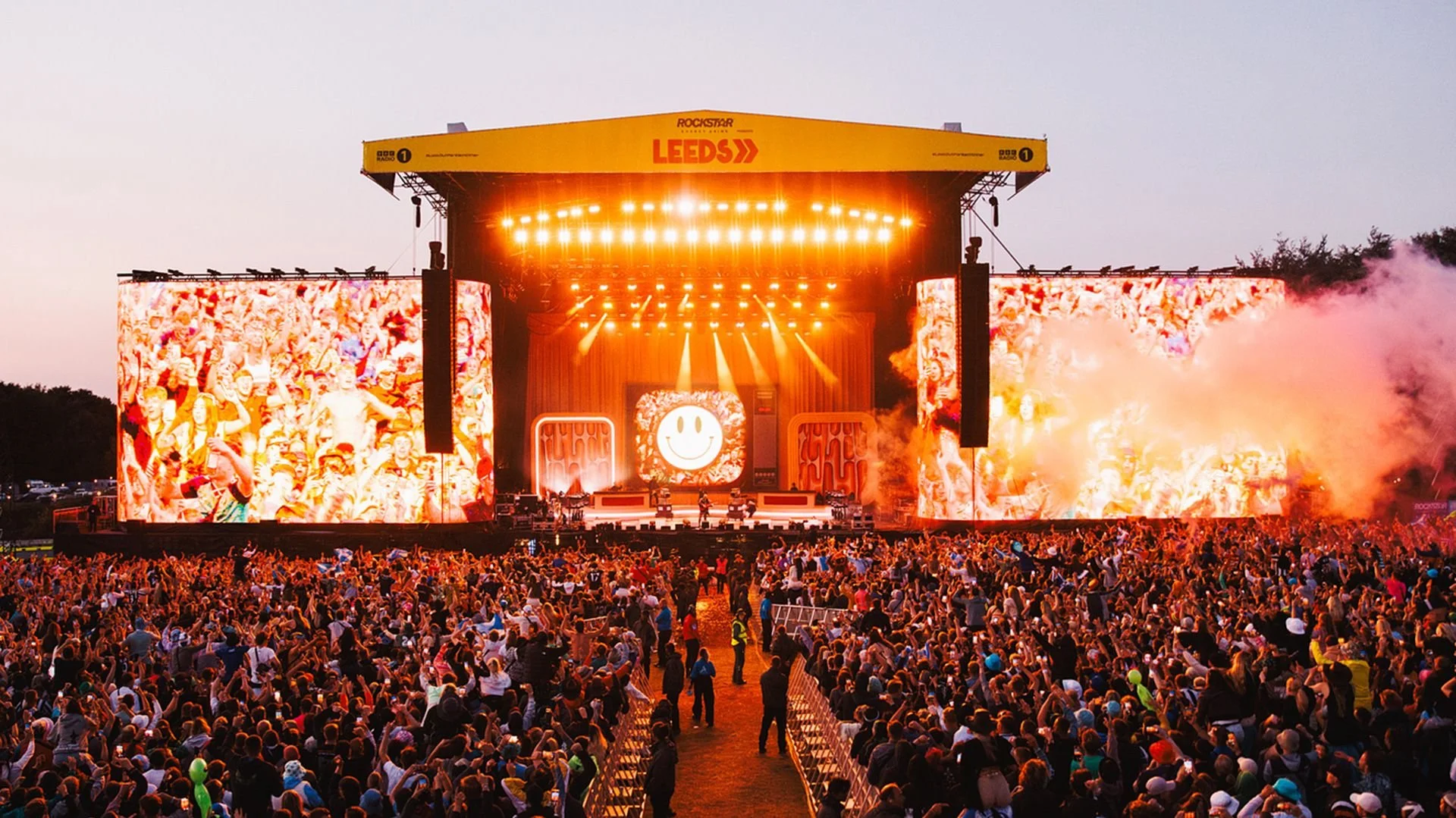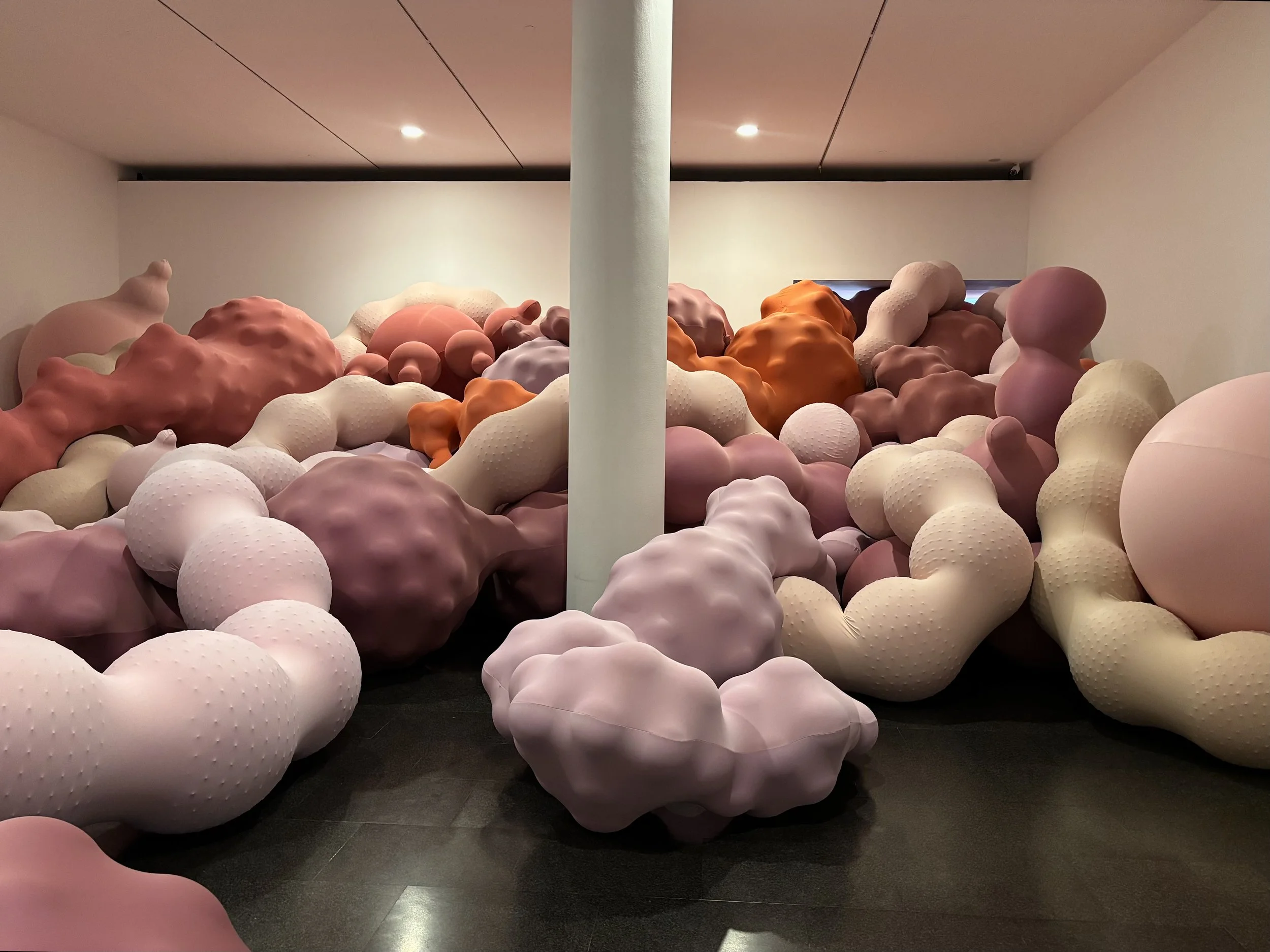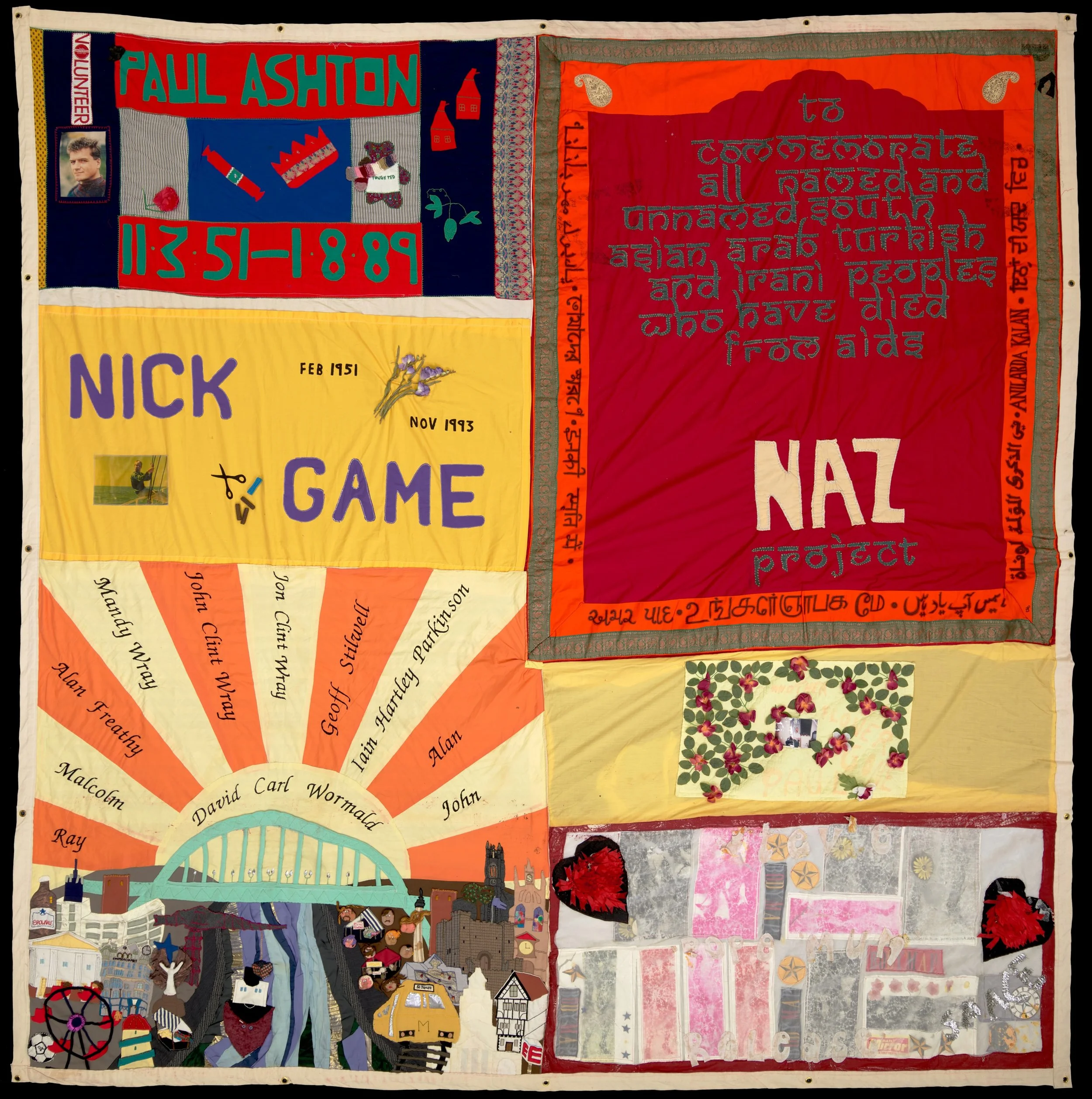Anthony McCall: Solid Light at Tate Modern review
The Tate has been showing light as an artistic tool and in this vein McCall’s exhibition replaces Yayoi Kasama’s Infinity Room. He is well and truly back on the scene with four major shows, here at the Tate, the Guggenheim Bilbao, Sprüth Magers in London, and the Museum of Art Architecture and Design in Lisbon in the autumn.

Portrait of Anthony McCall at Tate Modern 2024. Photo © Tate (Josh Croll).
McCall is an influential artist who has upended the conventional passive viewing experience of cinema and pioneered a more immersive form of participation in his practice where the viewer becomes a collaborator.
For this exhibition the Tate dipped into their archives and used their 2005 purchase of his work Line Describing a Cone 1973 from which to mount this exhibition tracing McCall’s developing interest in film and space.
McCall entered the art scene in the early seventies as a pioneer of experimental cinema and installation art honing his skills during his involvement in London’s Independent film community then moving to New York in 1973 with his then love interest, performance artist Carolee Schneemann. At this time the American art scene was bubbling with ideas in the spheres of radical avantgarde film making and performance art by the likes of Andy Warhol, Michael Snow and Yoko Ono. But he pondered on his belief that performance art can only really becomes art if it is recorded.

Anthony McCall, installation view of Split Second (Mirror) I, 2018, Tate Modern, 2024. Photo © Tate (Josh Croll).
The exhibition starts with a room showing line drawings and the meticulous planning that goes into his solid light work. “At its heart every piece is a line drawing the drawings never go away and are embedded in the work and are what produce the 3 dimensions forms.” - Anthony McCall
The line drawings are followed by a room with his film Landscape for Fire performed to a small audience at dusk on 27 August 1972, on a disused airfield in North Weald. A carefully choreographed outdoor performance of participants in white uniforms lighting fires in a geometric grid formation against a soundtrack of foghorns, wind and burning. It is hard to discern where this piece sits in the exhibition, except that it demonstrates early recorded performance art and highlights McCall’s shift from conventional cinema to “art”.
His beams of light works were originally shown in old New York lofts previously used for light engineering, millinery, or sweatshops. All being places with enough dust in the air to catch the light as well as numerous people smoking, as was allowed back then. The combination of the dust and smoke gave solidity to the projections hence did not lend itself well to being shown in clean slick galleries leading to the failure to reproduce the effect at an exhibition in Sweden. This combined with the realisation he needed to make a living led him to retreat from making art in the late 70s only to return to the practice in the new millennium enticed by the artistic potential of emerging technology. This explains the gap between his Line Describing a Cone piece (1973) and his next piece Doubling Back (2003).
The fun begins in the darkened main room beginning with his foundational work and three additional works of large-scale, immersive sculptural light installations. Upon entering you find yourself pondering the strong white lines drawn by projectors on black walls and realise the lines are slowly moving, then one notices the mist is making the beams of light solid and that gallery visitors are beginning to interact with the art. Each person is having their own unique experience and creating their own piece of “performance art”.

Anthony McCall installation view of Landscape for Fire, 1972, Tate Modern, 2024. Photo © Tate (Josh Croll).
Split-Second Mirror (2018), the most recent work on show, is the first time McCall has used an intervention using a wall sized mirror creating a double projection. When you are inside one of the cones you are looking at half of what is actually there, and the other half is virtual and you cannot tell with ease which is which.
There is an importance to the “slowness’ of his work. Everything moves intentionally slowly. If you make a sculpture form and it is moving fast the natural tendency is to stay stock still and watch it whereas if you make it move slowly it is almost as if you are looking at a sculpture that is not changing, and the visitor brings the movement to it. As McCall said, “The spectator should be the fastest object in the room.”
There is no prescribed way to enjoy the art. It is the job of the spectator to find ways to engage with the work and bring their own meaning and experiences to it. Find what you want from it. Stay as long or as little as you wish, and that freedom is as it should be.
Date: 27 June 2024 – 27 April 2025. Location: Tate Modern, Bankside, London SE1 9TG. Price: £14 Under 12s & Members FREE. Book now.
Words by Natascha Milsom
Autumn is always a busy time for art in London, with Frieze Week in October drawing international attention. But beyond the fairs, the city’s museums and galleries are offering a strong line-up of exhibitions worth seeing. From the V&A’s exploration of Marie Antoinette Styleto Tate Modern’s major survey of Nigerian Modernism, there is much to engage with. Dirty Looks at the Barbican…
With shows ranging from historical military art to queer talismans, pop protest, and the power of drawing, here is our guide to the art exhibitions to see in London in July 2025…
Edward Burra described painting as a ‘sort of drug’, a tonic to the rheumatoid arthritis that plagued his daily existence. Under its influence, he became one of the great observers of the twentieth century, creating vivid and surreal scenes that captured a rapidly changing society. The latest exhibition of Burra’s work at the Tate Britain…
This week, the Hayward Gallery has opened the touring exhibition of Yoshitomo Nara, expanding on the blockbuster shows previously held at the Guggenheim Museum Bilbao and the Museum Frieder Burda in Baden-Baden. The exhibition includes both early and more recent sculptures, with some works created as recently as last year…
What’s on in London this week (16–22 June): A vibrant round-up of London’s best art, theatre, music, food, and free events—plus the return of the Royal Academy’s Summer Exhibition and a seafood hotspot opening in Shoreditch…
This summer, Bozar presents a compelling trio of exhibitions that pose urgent questions about who we are, how we see one another, and what we carry — both within and across cultures. From When We See Us, a sweeping survey of Black figuration across the last century, to Berlinde De Bruyckere’s haunting sculptural works in Khorós, and Familiar Strangers, which reflects on shifting identities in Eastern Europe…
This week in London will see the return of the HSBC Women’s Tennis Championships at Queen’s Club, the opening of Yoshitomo Nara at the Hayward Gallery, Eel Pie Island Open Studios, and LIDO Festival in Victoria Park…
A guide to art exhibitions to see in Brussels this summer, from Baucher and Feron’s Art Deco interiors to When We See Us, a landmark show on Black figurative painting curated by the late Koyo Kouoh, and Looking Through Objects, a compelling survey of contemporary Polish women designers…
London is set to serve up an extraordinary tennis season in 2025, offering fans an exciting mix of elite competitions across some of the city’s most iconic venues. From the historic grass courts of The Queen’s Club and the All England Lawn Tennis Club to the exclusive courts of the Hurlingham Club, tennis enthusiasts can look forward to a thrilling lineup of…
What’s on in London this week? From the London Design Biennale and Serpentine Pavilion to WOW!house at Chelsea Harbour and London Open Gardens — discover the city’s top exhibitions, performances, and cultural highlights…
Meltdown Festival 2025 – Curated by Little Simz · London Design Biennale 2025 · Royal Academy of Arts – Summer Exhibition 2025 · London Festival of Architecture 2025 · London Open Gardens 2025 · Serpentine Pavilion 2025 – Marina Tabassum: A Capsule in Time · London Gallery Weekend 2025 · Camberwell Arts Festival 2025 – ‘Free For All’ · ICA – Connecting Thin Black Lines: 1985–2025 · Saturday Sketch Club – Royal Academy of Arts · Botis Seva / Far From The Norm – Until We Sleep · London Road – National Theatre Revival · Eel Pie Island Open Studios · Wandsworth Arts Fringe…
Your essential guide to what to see and do across London during the London Festival of Architecture 2025 — a citywide celebration of architecture, ideas, and community, featuring everything from late-night studio openings and thought-provoking talks to exhibitions, documentaries, and large-scale installations…
This summer, the Barbican Centre in London presents Frequencies: the sounds that shape us (22 May – 31 August), a dynamic and multi-disciplinary season dedicated to exploring the transformative power of sound and sonic experience. Here are 10 unmissable events within the Frequencies season…
From Clerkenwell Design Week, Wide Awake Festival to the Chelsea Flower Show, London offers a rich mix of theatre, exhibitions, live music, and cultural events from 19–25 May. Discover standout performances, thought-provoking art, and unique experiences across the city…
Discover a range of exhibitions opening in London this June, from the Kiefer / Van Gogh show at the Royal Academy to Dan Guthrie at Chisenhale. Explore bold solo displays, landmark retrospectives, and events like the London Design Biennale at Somerset House and London Open Live at Whitechapel Gallery…
Experience London at its most vibrant during Chelsea Flower Show 2025, with a city-wide celebration of flowers, art, and culture. From dazzling floral displays in Chelsea, Belgravia, and Brompton, to themed teas, flower-covered taxis, and world-class exhibitions, discover the best events and serene garden escapes blooming across the capital…
Discover the best things to do in London from 12–18 May 2025, from exploring global design at London Craft Week to seeing Jane Eyre brought to life by Northern Ballet, making your own bouquet at Sketch with Wild at Heart, or experiencing the striking Gilbert & George exhibition DEATH HOPE LIFE FEAR… in East London…
Discover must-see art exhibitions in Margate this summer, from powerful shows at Turner Contemporary, Carl Freedman Gallery, Quench Gallery, and Liminal Gallery to public commissions by artists like Tracey Emin, Antony Gormley, and Yinka Ilori….
Discover the best UK festivals to visit this summer with our guide — from the legendary Reading & Leeds Festival and the elegant opera of Glyndebourne, to the music and wellness haven of Wilderness and Glasgow’s very own TRNSMT…
Discover our guide to what’s on in London this week (5–11 May), from Tate Modern’s 25th Birthday Weekender and Peckham Fringe to new exhibitions, open-air theatre, live music, film, and more...
Barcelona’s summer 2025 art exhibitions include MACBA – Collection: Prelude. Poetic Intention & Carlos Motta: Pleas of Resistance, : To See After Nature by Paula García-Masedo at Fundació Joan Miró, A Universal Master by Fernando Botero: at Palau Martorell, Zurbarán (super) Natural at MNAC, and Miguel Milá. Dissenyador (pre)industrial at Disseny Hub, offering a dynamic range of contemporary and classical works...
London Craft Week returns to London from 12-18 May 2025 with exhibitions, workshops, and live demonstrations. Discover our guide to must-see events this year…
London’s 2025 summer is packed with unmissable music festivals, from the cutting-edge electronic beats of Wide Awake and Waterworks to the pop extravaganza of Mighty Hoopla. Experience legendary performances at BST Hyde Park, iconic sounds at Somerset House Summer Series, and the celebration of underground dance at GALA…
London is set for exciting events this May, with a range of art, design, and cultural experiences. Highlights include Tate Birthday Weekender, Clerkenwell Design Week, and the opening of Soho Theatre in Walthamstow…
London’s Degree Shows offer a glimpse into the city’s creative future, with each school bringing something distinct. From the bold, multidisciplinary work at Goldsmiths, to the fine art tradition at the Slade School of Fine Art, the experimental exhibitions at Central Saint Martins, and the postgraduate focus at the Royal Academy Schools…
Tate will offer visitors a rare opportunity to view the UK AIDS Memorial Quilt in its Turbine Hall from 12 to 16 June 2025. The quilt, which began in 1989, consists of 42 quilts and 23 individual panels representing 384 individuals affected by HIV and AIDS…
